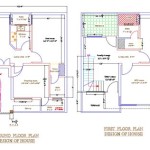Good House Plants for Low Light
Many individuals desire to incorporate the aesthetic and air-purifying qualities of houseplants into their homes, but not all living spaces offer abundant natural light. Fortunately, numerous plant species thrive in low-light conditions, making it possible to enjoy greenery even in dimly lit apartments or rooms with north-facing windows. Selecting the right low-light tolerant plants can enhance indoor environments without the need for specialized lighting or constant care.
One popular choice for low-light environments is the Snake Plant (Sansevieria trifasciata). Known for its striking upright leaves and air-purifying properties, the snake plant tolerates neglect and infrequent watering. Its resilience makes it an ideal choice for beginner plant owners or those with busy schedules. Different varieties offer variations in leaf color and pattern, providing options to suit different aesthetic preferences.
ZZ Plants (Zamioculcas zamiifolia) are another excellent option for low-light areas. These plants are remarkably drought-tolerant due to their thick rhizomes that store water. Their glossy, dark green leaves add a touch of elegance to any space. ZZ plants are also relatively pest-resistant, furthering their low-maintenance appeal.
The Cast Iron Plant (Aspidistra elatior) earns its name from its ability to withstand a wide range of challenging conditions, including low light, infrequent watering, and temperature fluctuations. While its growth is slow, its deep green, strappy leaves offer a classic, understated aesthetic. This plant is a reliable choice for those seeking a truly low-maintenance option.
Peace Lilies (Spathiphyllum) are valued for their elegant white flowers, which bloom intermittently throughout the year, even in low light. While they appreciate some indirect light for optimal flowering, they can tolerate lower light levels. Peace lilies also contribute to improved indoor air quality. However, they require consistent moisture and may be more susceptible to pests than some other low-light options.
Prayer Plants (Maranta leuconeura) are known for their distinctive leaf patterns and their fascinating habit of folding their leaves upwards at night, resembling hands clasped in prayer. While they prefer bright, indirect light to showcase their vibrant leaf coloration, they can adapt to lower light levels, although their growth may be slower and their colors less intense. These plants require consistent moisture and humidity.
Chinese Evergreens (Aglaonema) are available in a wide array of cultivars with diverse leaf colors and patterns, making them a versatile choice for adding visual interest to low-light spaces. These plants are relatively low-maintenance and tolerate infrequent watering. They also contribute to improving indoor air quality. However, they are sensitive to cold drafts.
Pothos (Epipremnum aureum) are incredibly versatile vining plants that thrive in a variety of conditions, including low light. While their growth may be slower in dimmer environments, they can still cascade gracefully from shelves or climb trellises. Pothos are also very easy to propagate, allowing for easy expansion of your indoor jungle. Various cultivars offer a range of leaf colors and patterns.
Philodendrons, like Pothos, are another group of vining plants well-suited to low-light conditions. Heartleaf Philodendron (Philodendron hederaceum) is a particularly popular choice due to its easy care and attractive heart-shaped leaves. These plants can tolerate a wide range of light levels, though their growth rate may be affected by lower light. Like Pothos, they are also easy to propagate.
Spider Plants (Chlorophytum comosum) are classic houseplants known for their air-purifying qualities and their ability to produce "spiderettes," or baby plants, on long stems. These spiderettes can be easily rooted to create new plants. While they prefer bright, indirect light, they can tolerate lower light levels, though their growth may be slower and they may produce fewer spiderettes.
Finally, Lucky Bamboo (Dracaena sanderiana), while not technically bamboo, is often grown in water or soil and tolerates low light conditions. It is known for its resilience and is often associated with good fortune in some cultures. Lucky Bamboo can add a unique and minimalist aesthetic to any space.
When caring for low-light plants, it is important to avoid overwatering, as these plants generally require less frequent watering than those in brighter locations. Allowing the soil to dry out slightly between waterings helps prevent root rot. Additionally, rotating the plants regularly ensures that all sides receive equal exposure to available light, promoting even growth.
Selecting the appropriate plants for available light conditions is crucial for success in indoor gardening. By choosing from these low-light tolerant options, individuals can enjoy the benefits of houseplants without the need for specialized equipment or constant attention. These plants contribute to a healthier and more aesthetically pleasing indoor environment, adding a touch of nature to any space.

Low Light Indoor Plants That Thrive In Near Darkness

16 Of My Favorite Low Light Houseplants Delineate Your Dwelling

Best 30 Low Light Indoor Plants For Home Or Office

12 Houseplants For Low Light Ourhouseplants

28 Low Light Indoor Plants Houseplants

27 Easy Low Light Indoor Plants That Don T Need Much Sun

20 Fantastic Low Light Indoor Plants Houseplants That Love The Dark

8 Best Indoor Plants For Low Light

Low Light Houseplants Alden Lane Nursery

10 Best Low Light Indoor Plants Easy Care Maintenance








